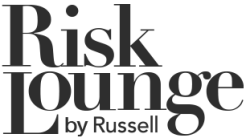
Classification society Lloyd’s Register is to finalise its new rules on the nuclear propulsion of merchant vessels in the next fortnight as the interest in the use of atomic power increases.
Speaking at the Insurance Institute of London Vince Jenkins, Global Marine Risk Adviser at Lloyd’s Register said the society had been approached by a number of major shipowners who were exploring the use of nuclear power in vessels and as such had decided it needed to revise the existing rules which were drawn up almost 50 years ago.
“The use of nuclear power in merchant vessels is not new,” he told underwriters and brokers at Lloyd’s. “While this has been seen as very much a military application there were vessels in the 1960s which were nuclear powered and we drew up a set of rules at the time.
“However we have seen a rise in interest from shipowners to the potential use of nuclear propulsion and we felt the time was right to revise the rules. The new draft rules will be placed before the technical committee in a fortnight and we hope they will act as a point of discussion for the maritime industry.”
He said the rising cost of fuel and the threat of fines for CO2 emissions were seen as the major drivers which are turning owners towards the nuclear option and he added the engines used would not turn the vessels into floating bombs.
“The level of enrichment that would be needed in merchant vessels is expected to be around the 4% to 5% mark while in military applications the enrichment is 100%. The potential for the vessels triggering an atomic detonation is non existent and while there are fears of radioactive leaks these again would be almost impossible.”
He said that the costs of the vessels and the engines would prohibit their use by all but the biggest shipowners although once the vessels were in operation the sole fuel costs would be the replacement of the radioactive rods every four to five years.
“There is a demand but at present there is no real way of accurately forecasting how many vessels will be driven by nuclear propulsion,” he added. “There is a real demand for details and with every indication of the rising costs of fuel and the future potential for fines for emissions it is understandable that owners are looking to consider all the options available.”





